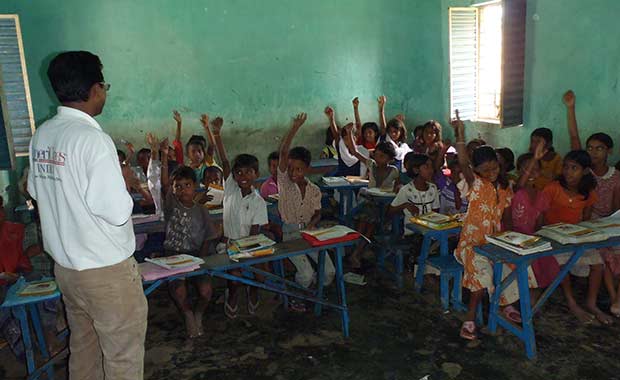In late June 2012, the state of Bihar and Uttar Pradesh were affected by Acute Encephalitis Syndrome(AES). The symptomatic forms of disease leave neurological sequele or cause death in the severest cases. Japanese Encephalitis, one of the main diseases causing AES, is a viral infection spread mainly through Culex mosquito bites. Children between the age group 2 to 15 are the most vulnerable.
Since May 2012, 503 children had been hospitalized and 188 children have died due to the epidemic in the affected areas in Bihar where AIF carried out its intervention. Most of the reported cases and deaths were in children belonging to low socioeconomic groups.
After carrying out a needs assessment with the help of Bihar Inter Agency Group (BIAG) and local partners , AmeriCares India developed IEC materials and identified Muzaffarpur, Begusarai, Sitamari and Patna districts of the state as the ones requiring intervention. Mr. Neeraj Prasad, Manager: Emergency Response and Preparedness, visited these areas in July 2012.

Five volunteers were trained on delivering IEC(Information, Education and Communication) on AES to the village population affected by or susceptible to the syndrome. A plan was made to disseminate this information to ten thousand households with the help of leaflets containing information about the outbreak in simple, easy to understand, local language. The IEC was carried out over the above mentioned districts, covering four blocks, eight villages, six hospitals, eight schools and two NGOs. The intervention is assumed to be critical to help prevent a similar outbreak, otherwise imminent, after the monsoons. Increasing awareness about the spread, prevention and symptoms of the disease will help the hitherto unaware population prevent the cycle of transmission by personal protection. They will now in addition be able to identify the disease and take the patient to the hospital in time to prevent morbidity and mortality.
AmeriCares India’s work was appreciated by the state government which directed the local authorities to aid the team in its work.
The effort, the team hopes, will help fulfill AmeriCares’ vision of helping people live better, healthier lives.